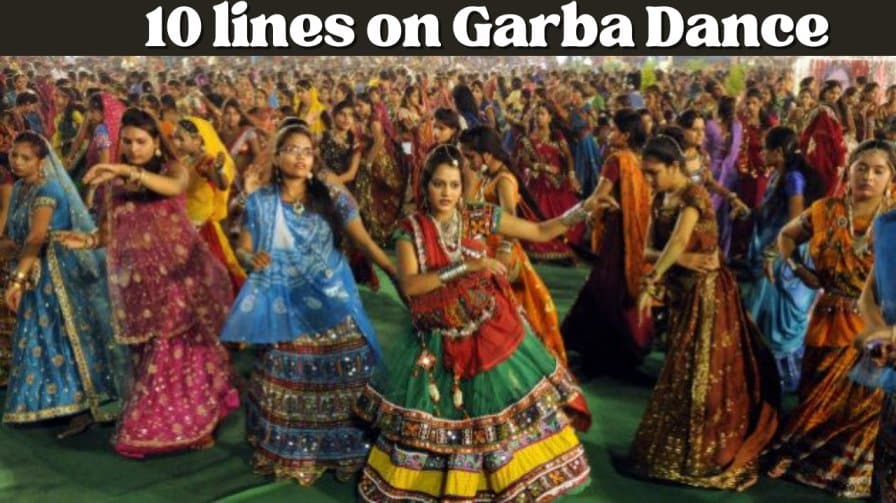Today, we are sharing 10 lines on Garba Dance in English This article can help students who are looking for information about 10 lines on Garba Dance. This essay is very simple and easy to remember. The level of this essay is moderate so any student can write on this topic.
This article is generally useful for class 1 to class 12
10 lines on Garba Dance (easy)
1) Garba is a traditional dance from the Indian state of Gujarat.
2) It is performed in a circle, with the participants moving around a central point.
3) The dance is fast and energetic, with the movements accompanied by the beating of dhol drums.
4) It is usually performed in colourful traditional dress.
5) The dance is enjoyed by people of all ages and is popular at cultural events and parties.
6) It has become popular outside of Gujarat and is enjoyed by people all over India and around the world.
7) There are many different styles of Garba, each with its own unique steps and choreography.
8) The dance is often performed to devotional songs about the goddess Durga.
9) It is usually performed during the Navaratri festival, which is a celebration of Durga.
10) Garba is a joyful and festive dance that brings people together and celebrates the culture and traditions of Gujarat.

10 lines on Garba Dance (informative)
1) Garba is a traditional dance from the Indian state of Gujarat.
2) It is typically performed during the Navaratri festival, which is a celebration of the goddess Durga.
3) The dance is performed in a circle, with the participants moving around a central point called the “dandiya stick.”
4) The movements of the dance are fast and energetic and are accompanied by the rhythmic beating of dhol drums.
5) Garba is often performed in colourful traditional dress, with men wearing Kediyu and women wearing Chaniya choli or ghagra choli.
6) The dance is performed by people of all ages and is a popular form of entertainment at cultural events and parties.
7) In recent years, Garba has become popular outside of Gujarat and is now enjoyed by people all over India and around the world.
8) There are many different styles of Garba, each with its own unique steps and choreography.
9) The dance is often performed to the accompaniment of devotional songs, which tell the stories of the goddess Durga and her many incarnations.
10) Garba is a joyful and festive dance that brings people together and celebrates the culture and traditions of Gujarat.
5 lines on Garba Dance
1) Garba is a traditional dance from the Indian state of Gujarat.
2) It is performed in a circle, with the participants moving around a central point called the “dandiya stick.”
3) The dance is fast and energetic, with the movements accompanied by the beating of dhol drums.
4) It is usually performed in colourful traditional dress, with men wearing Kediyu and women wearing Chaniya choli or ghagra choli.
5) It is usually performed during the Navaratri festival, which is a celebration of the goddess Durga.
FAQ
The Garba dance is believed to have originated in the Indian state of Gujarat. It is a traditional dance that is performed during the Navaratri festival, which is a celebration of the goddess Durga.
The Garba dance is typically performed in a circle, with the participants moving around a central point called the “dandiya stick.” The movements of the dance are fast and energetic and are accompanied by the rhythmic beating of dhol drums. The dance is often performed in colourful traditional dress, with men wearing Kediyu and women wearing Chaniya choli or ghagra choli.
Yes, in recent years the Garba dance has become popular outside of Gujarat and is now enjoyed by people all over India and around the world. There are many different styles of Garba, each with its own unique steps and choreography. It is a joyful and festive dance that brings people together and celebrates the culture and traditions of Gujarat.
